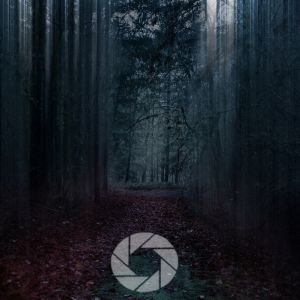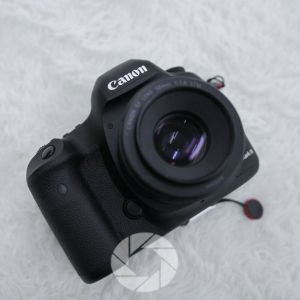
If you’ve ever stood at the edge of a canyon and wondered, “Wide angle or telephoto?” or What are the best lenses for landscape photography…you’re not alone.
Lenses are more than tools; they shape how we see.
This post walks you through my go-to lenses for landscape work, when I switch them out, and how they help me tell very different stories with the same view.
I receive commissions from links in this post, thank you for your support
Best Landscape Photography Lenses
(and When to Actually Use Them)
Best Lenses for Landscape Photography: My Go‑To Picks (Wide Angle, Mid‑Range & Telephoto)
When it comes to landscape photography, I think of lenses like storytelling tools. Each one sees the land a little differently. And that’s where the magic lies. A wide-angle lens lets me capture that sweeping sense of scale, the kind that makes you feel small under a massive sky (Rokinon 14mm f/2.8).
My mid-range zoom (24-105mm) gives me flexibility when I want to frame tighter, more intimate scenes; forest paths or layered hills at golden hour. And then there’s the telephoto, my go-to for compressing distance and isolating details, especially in moody light or atmospheric conditions (Canon 100-500mm RF f/4.5-7.1 L).
I don’t carry a dozen lenses into the field; just the ones that help me see and feel a place more deeply. Below, I’ll walk you through my core picks and how I decide which one to use depending on the light, the land, and the story I want to tell.
Discover Your Next Journey – These Tours are designed for people who connect with light and landscape.
What Lenses Are Best for Landscape Photography?
The truth: there’s no single “best” lens. But most landscape photographers rely on three categories:
- Wide-angle lenses for expansive vistas and creative foreground perspective
- Mid-range zooms or primes for flexible compositions and greater clarity
- Telephoto lenses to compress scenes, isolate distant details, or create visual flow
Let’s focus here on practical experience: when and why I choose each type during field sessions; from sunrise by the sea to misty mountain ridges, and astrophotography sessions under starry skies.
Best Lens Types for Landscape Photography: What to Use and When
| Lens Type | Focal Length Range | Best For Photographing | Why It Works Well |
|---|---|---|---|
| Wide Angle Zoom | 10–35mm | Vast landscapes, dramatic skies, sweeping foregrounds, seascapes | Captures wide scenes with exaggerated perspective and strong leading lines |
| Mid-Range Telephoto | 70–135mm | Mountains, compressed backgrounds, intimate scenes | Allows for scene compression and separation, ideal for isolating landscape elements |
| Telephoto Zoom | 100–500mm | Distant peaks, wildlife in environment, abstract landscapes | Excellent for compression, layering, and distant detail; minimizes visual clutter |
| Prime Lens | 14mm, 24mm, 35mm, 50mm, etc. | Low-light landscapes, night skies, high image quality compositions | Sharp optics, lightweight, and fast apertures make primes great for intentional work |
Best Lens for Outdoor Photography (Wide-Angle)
Wide zoom lenses are ideal and offer flexibility plus creative framing with dramatic foreground perspective.
Whether you go with Nikon Z 14‑24mm, Sony FE 16‑35mm GM, or Canon RF 15‑35mm L-series, these lenses are foundational. Pair them with prime options like Sony 20mm f/1.8 G or Zeiss Batis 18mm or Rokinon 14mm f/2.8 for lightweight or astro-focused flexibility.
Why these wide-angle lenses? They allow dramatic framing, create compelling foreground interest, and offer flexibility without switching kit especially important when the light changes quickly at sunrise/sunset.
Nikon Z 14-24mm f/2.8 S (Ultra-Wide Zoom)
A staple for Nikon Z shooters. Ultra-wide with edge-to-edge sharpness, minimal distortion, and ideal f/2.8 performance for twilight or astro captures
Sony FE 16‑35mm f/2.8 GM II (Wide Zoom)
Sony’s flagship wide zoom impresses with compact design, superb corner sharpness, and consistency across focal range. A go-to for dramatic foreground‑to‑sky compositions.
Canon 15-35mm RF f/2.8L IS
For Canon users, the f/2.8L IS version offers superb sharpness, image stabilization, lower price, and excellent weather sealing. Perfect for low light use.
Best Prime Lenses for Landscape Photography
Primes like Sony 20mm and Zeiss 18mm offer stellar image quality and light-gathering capability for dawn, astro, or long exposures. Though lacking zoom, their optics are often sharper and faster for creative exploration.
Sony FE 20mm f/1.8 G
A lightweight, sharp alternative for Sony users; ideal for astro or low-light landscapes. Minimal chromatic aberration and great corner-to-corner resolution through f/8–f/11.
Zeiss Batis 18mm f/2.8 (Sony)
Offers amazing sharpness, beautiful color rendering, and weather sealing. This is a prime many landscape professionals swear by.
Nikon Z 24‑70mm f/2.8 S or Canon RF 24‑70mm f/2.8 L
Exceptional mid-range choices packed with versatility. Great for scenery that combines wide vistas and isolated structures plus fast aperture for unpredictable light conditions.
Best Telephoto Lenses for Landscape Photography
Don’t skip on mid range and long range telephoto. Lenses like Sony/Canon/Nikon 70‑200mm f/4 or 100‑400mm/500mm bring compression, isolate focal details, and let you capture layers in large vistas.
These are less frequent purchases in typical landscape lists but they offer compositional power many photographers overlook.
Sony FE 70‑200mm f/4 / Canon RF 70‑200mm f/4 / Nikon Z 70‑200mm f/4
Telephoto range is surprisingly powerful for landscape: perfect for compressing mountain ridges, isolating lightning storms, or capturing shoreline drama from afar.
Sony FE 100‑400mm GM, Canon EF 100‑400mm II, Nikon Z 100‑400mm
Super-tele lenses let you find hidden compositions: layers of distant ridgelines, compressed coastal vistas, or isolated landforms within grand landscapes.
Canon RF 100-500mm f/4.5-7.1 L IS USM
The Canon 100-500mm f/4.5-7.1 L IS USM is an incredibly versatile telephoto zoom lens that delivers sharp, detailed images across its entire focal range.
Its built-in image stabilization and weather-sealed L-series build make it reliable. It’s also light weight enough to use frequently.
While the variable aperture isn’t ideal for low light, the lightweight build and excellent autofocus performance more than make up for it in the field.
Lens Comparison at a Glance
| Brand & Lens | Wide‑Angle Skill | Mid‑Range/Prime Skill | Telephoto Ability |
|---|---|---|---|
| Nikon Z 14‑24mm f/2.8 | ultra-wide, razor sharp | Limited zoom; prime-style feel | — |
| Sony FE 16‑35mm f/2.8 GM II | versatile zoom, corner clarity | Works well at 35mm for mid-range scenes | — |
| Canon RF 15‑35mm f/2.8L IS | wide, stabilized, sharp | — | — |
| Sony FE 20mm f/1.8 G | compact prime, astro-capable | Good at 20mm low-light clarity | — |
| Zeiss Batis 18mm f/2.8 | excellent prime rendering | — | — |
| Nikon Z/Nikon Z 24‑70mm f/2.8 S | flexible range at f/2.8 | Excellent middle focal flexibility | — |
| Sony FE 70‑200mm f/4 | — | Good mid-range compression | dynamic close-ups |
| Sony FE 100‑400mm GM / Canon / Nikon | — | — | reach and compression depth |
When to Use Each Lens: Storytelling Through Glass
Landscape photography is as much about narrative as it is about optics.
- Wide-angle lenses: Great for expansive emotional landscapes; sunsets, coastlines, cavernous cliffs. They place the viewer inside the scene.
- Mid-range zooms/primes: Ideal for variable compositions; intimate valleys, unique layers of mountain ridges, or framing foreground trees against distant peaks.
- Telephoto zooms: Best for isolating distant beauty; dramatic compression of mountain layers, shoreline formations, or cloud‑light details on ridges.
Conclusion
No one lens can do everything. But building a thoughtful kit around one wide-angle zoom, a reliable mid-range option, and a telephoto lens gives you the flexibility to match scene, light, and mood.
Whether you capture dramatic coastlines at golden hour, ethereal mist over mountain ridges, or compressed layers of distant terrain, these lenses become your creative language to convey emotion and presence.
Use this chart and insight to guide your lens choices; broken down by brand and shooting scenario. Then match each to your creative intent and the landscapes you’re chasing. Photography isn’t just gear, it’s about connection. These are the lenses I trust to help tell that story.
📸Learn for free!
➡️ FREE Wallpapers and Guides
➡️ DISCOUNTS on future Tours & Tutorials
➡️ TIPS for improving Your photography

I don’t share your Info with anyone. You can unsubscribe at anytime.
- Best Landscape Photography Lenses
- (and When to Actually Use Them)
- Best Lenses for Landscape Photography: My Go‑To Picks (Wide Angle, Mid‑Range & Telephoto)
- What Lenses Are Best for Landscape Photography?
- Best Lens Types for Landscape Photography: What to Use and When
- Best Lens for Outdoor Photography (Wide-Angle)
- Best Prime Lenses for Landscape Photography
- Best Telephoto Lenses for Landscape Photography
- Lens Comparison at a Glance
- When to Use Each Lens: Storytelling Through Glass
- Conclusion
- 📸Learn for free!






